by William Kherbek // July 7, 2023
This article is part of our feature topic Wilderness.
The Białowieża forest straddles the border of Poland and Belarus. It contains more than 140,000 hectares of woodland, and is home to more than 12,000 known species. Białowieża is regularly referred to as Europe’s largest “primeval forest.” This term is a somewhat elastic one. What does it mean to be “primeval”? Definitions vary, but it is generally agreed that to be truly “primeval” a forest must not be disturbed by “significant” human intervention. What, then, makes human intervention significant? Humans are, after all, part of nature, whether we like it or not. The ways in which humans interact with the Białowieża forest is the subject of Kinga Kiełczyńska’s 2016 work, simply entitled ‘Białowieża,’ which depicts a group of activists living in the forest, attempting to protect it from its alleged stewards, Poland’s State Forestry Board. The conflict grew out from an infestation of the forest by bark beetles, an “invasive species”—another slippery term referenced by Kiełczyńska in a later work, ‘Alien Species’ (2019). Kiełczyńska’s works, thus, examine the ways in which human beings conceptualise the spaces we invade, and what ideas like “wilderness” mean to the people who construct (and destroy) them.
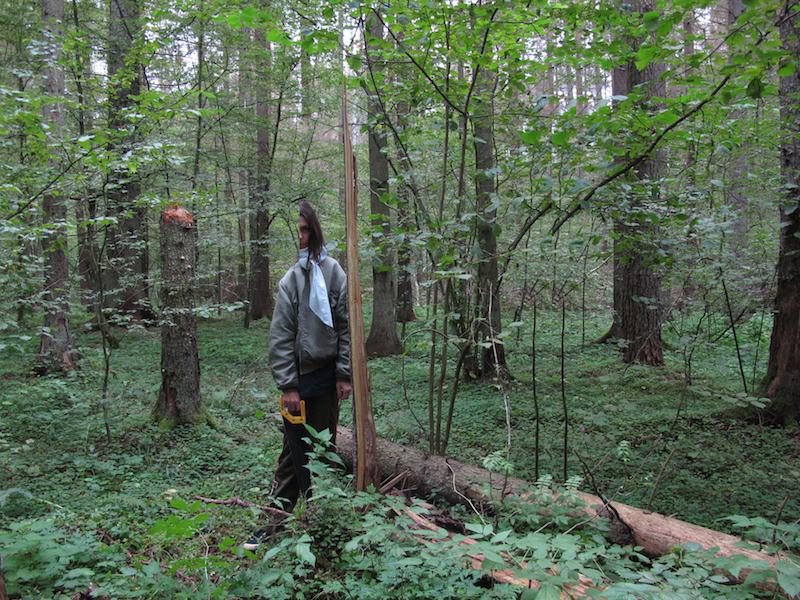
Kinga Kiełczyńska: ‘Białowieża: Chapter 1,’ 2017 // Courtesy of the artist and Exile Gallery
William Kherbek: Could you take us into the conceptual origins of the Białowieża project?
Kinga Kiełczyńska: The project started in a very urgent way. I didn’t conceptualise anything. The political events were happening and it developed organically. I know the Białowieża forest from my childhood. Anyone born in Poland knows this place; it’s like a mythical forest. It’s very old and very precious and everybody knows what it is and that there are bison there, which adds to the mythology of the place, because they are ancient animals that were brought back into the forest from extinction.
The first time I went to the area was in 2007. It happened while I was working on another project I spent a lot of time not only in Białowieża, but in the northern part of Poland. In 2016, when I was living in Berlin, I started to read that they were about to do large-scale logging in the forest due to a bark beetle infestation. There was conflicting news [reports about it]. The ones supporting the logging were state forest organisations and the ones against it were ecological activists. You pretty much saw immediately the left and right political polarity in the conflict.
I was just very curious about what was happening and I decided to go there and see for myself with my own eyes. The main motivation was that I felt like when I was there in 2007 and I made a project there, the forest gave me a lot. I thought I owed something to the place. So I went there and walked around and talked to various people in the area, to various groups of people: to the activists, to the local citizens, to the national forest guards. I talked to all the parties involved in the conflict and I pretty much figured out what the conflict was about. I started to naturally gather materials. The group of activists I associated myself with, Camp for Forests, were pretty open. I could just go there and stay with them and observe their activities, and I visited a few times.
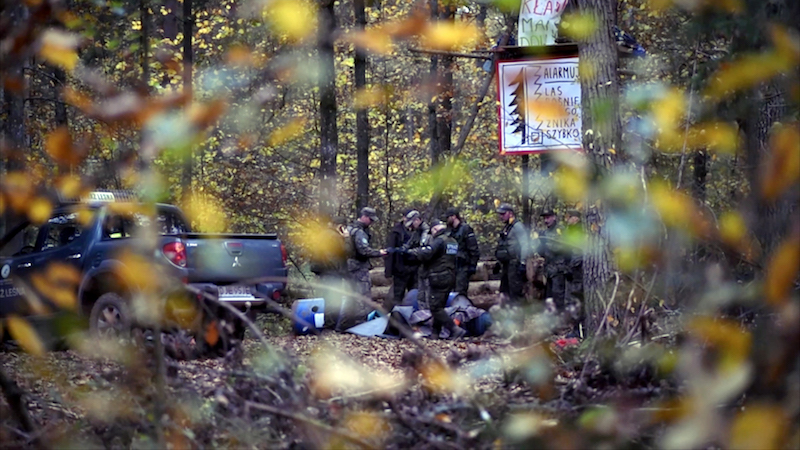
Kinga Kiełczyńska: ’10 millions+1,’ 2018-2019, video still, 10:25 min // Courtesy of the artist and Exile Gallery
WK: You mention an almost mythical aspect to Białowieża. Could you say more about this notion of mythology in the understanding of the the forest, and how it informs, to your mind, conceptions of “wilderness” more generally?
KK: Coming back to Białowieża and getting involved in the political conflict, you cannot avoid the other side, the mythical part of the forest. It’s present. It’s so powerful, and it continually reminds you why it’s important to fight for it. My personal experiences with the mythological side is really interesting, because while I was working on the project I took walks in the forest: you come there and you want to explore and see what damage has been done by the harvesters. During these walks, the mythical part starts to touch you.
One time, I parked my car on a side road to walk a little bit, and all of a sudden I got lost. The battery of my phone was down and you think “the car is just there. I’m going to find it really soon. There’s no problem.” But I couldn’t find it, and then there was a certain moment, after about half an hour of walking around, I started to panic a little bit. It was a cross between panic and the realisation of going back in time to this ancient moment. You think: “this is how the lives of people looked, before any type of farming technology was invented.” This kind of primal feeling in this primeval forest was an extremely precious experience.
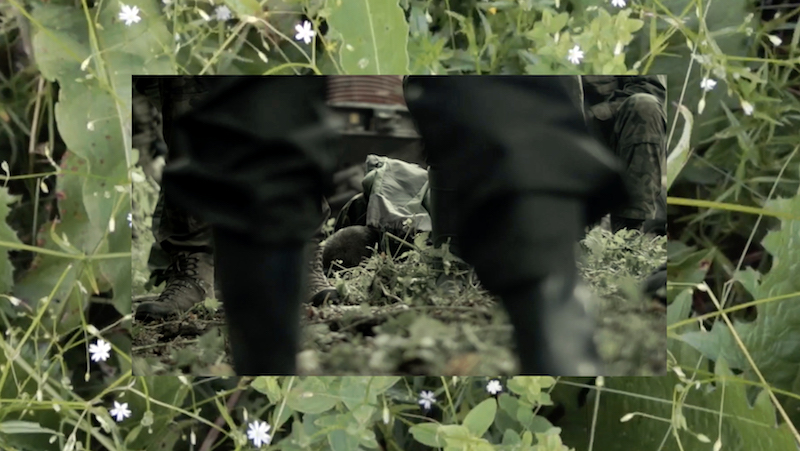
Kinga Kiełczyńska: ’10 millions+1,’ 2018-2019, video still, 10:25 min // Courtesy of the artist and Exile Gallery
WK: What was the process of interacting with these different ecologies like? Humans, of course, have represented animals in more or less mystical ways since the time of cave paintings. Even today, in the way that, for example, the bison is represented in Polish commercial products as a mascot. Did you feel an enhanced sense of how human and non-human ecologies connected and established dialogues in Białowieża?
KK: The bison being in mythology in Poland has a special context, because it is a little bit fake. The bison was brought back after it went completely extinct. You can discuss how much something is wild or natural, but often that distinction doesn’t really exist. The Białowieża Forest is called a primeval forest, but it has had human intervention in it. Just the idea of creating a reserve is a huge intervention. It’s not natural because we put a certain boundary around it. The idea of something wild and untouched is a very romantic idea, but it doesn’t exist anymore. We said goodbye to it a long time ago.
I think what kind of came out of the experience for me, in terms for my other projects, is that I started to look at the binary between culture and nature differently. If you look at all the materials we use as humans, they all come from some organic matter. The idea of natural and nonnatural creates this kind of distance between us and nature. We’ve been talking about it for a couple of years now in art, that we are not separate from nature, we are part of nature, but those are just platitudes that people repeat.
I’m not saying that I’m putting myself above that, but that there is a certain understanding that came for me in a philosophical way. You can’t make art about nature if you’re doing it with different means that are not in accord with the processes happening in the natural world. You can make technological art, but it sits in contact with the bigger algorithm of nature.
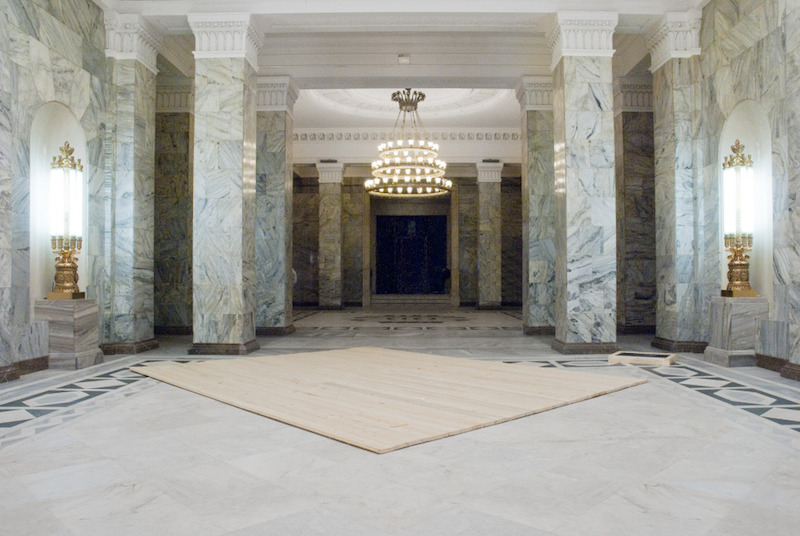
Kinga Kiełczyńska: ‘Place of Power,’ 2018 // Courtesy of the artist and Exile Gallery
WK: In terms of approach, how did you manage the line between creating fine art and creating a factual documentary in the work?
KK: It was somewhat a question of ego, the artist’s ego. How much do you want to introduce your own point of view, or fantasy, or whatever comes into building an artwork, your own formal stylisations. How much do you want to introduce? You want it to be attractive for the viewer somehow, but you don’t want to overdo it.
For example, with the flooring system that I created from the spruce trees damaged by the bark beetle, I just decided to lay it down and not do anything more, not treat it even, just to have it as document, a silent witness of that story.
A lot of information was outside the artwork in the form of a text, because you need to know what you are walking on, but I thought this idea of putting the wood on the floor as something that you step on was really important, because that, for me, is a metaphor for our grounding, for our basic need to have something to stand on, the surface, the earth, something that supports us. I really wanted the forest to speak. I felt like less of an artist and more of a facilitator.
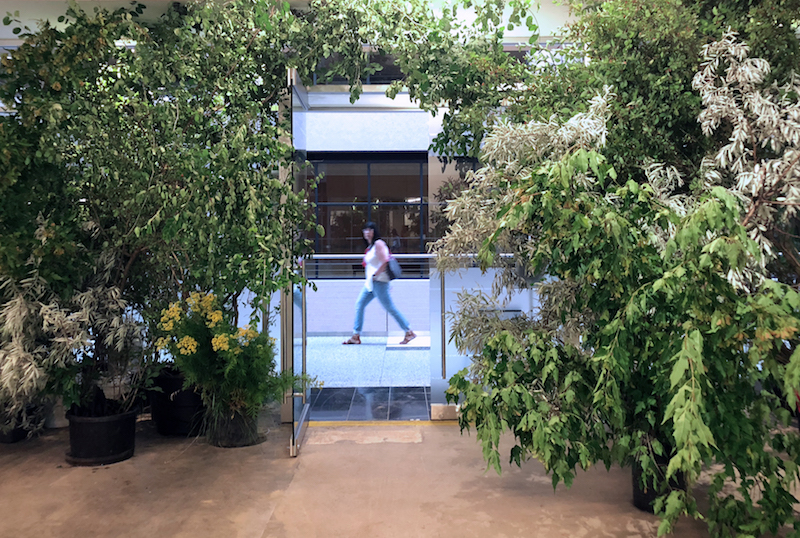
Kinga Kiełczyńska: ‘Alien Species,’ 2019 // Courtesy of the artist and Exile Gallery
WK: What were some of the limitations you faced in trying to convey the experience of a place as complex as Białowieża?
KK: We only like wilderness when it’s convenient for us. I’m being pretty cynical about it at this point, but that’s what I was thinking after being there. My later work, ‘Invasive Species,’ is about so-called “wilderness,” too. It concerns that which we consider to be “bad” wilderness versus “good” wilderness. That’s the idea of weeds in agriculture: it’s wilderness, but we don’t like it. We want to get rid of it, because it interferes with our production of crops. One kind of wilderness is ok, one is not.
I took it for granted that wilderness was something we had to protect, but as I progressed with the project, I started to reevaluate the definitions of wilderness. I started to get disillusioned as to whether there was such a thing as wilderness at all, but [I knew] that anything left there should be preserved. From a naive approach, I came more down to earth about the subject.




















